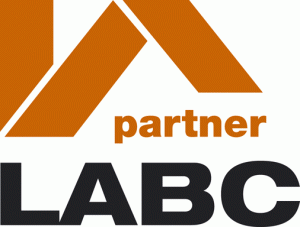| the Christopher Huntpractice architectural and building design for residential development |
|
Site
Menu
 |
|
|
The Design and Access
Statement. A simple device for the building designer to put into words what the drawings should be saying. DESIGN STATEMENT - TO SUPPORT AN APPLICATION
However, Local Planning Authorities are under increasing pressure from Central Government to have this written support statement with applications and complicated or contentious schemes may require this as a matter of course. CHP can help you by producing design statements when required to help support your planning application. Give us the details of your development proposal and we will let you know how we can help. How will a Design Statement help? It will help the Council, Councillors, neighbours, the public to: understand fully your proposals and the principles of the design consider the proposals against design policies in the Local Plan consider the proposal against design objectives in Planning Policy Guidance Note 1 from which the Design Statement requirement comes. There are three essential steps to producing a Statement and these are: Step 1 - site analysis and evaluation This is a factual account, which should be essentially based upon drawings and sketches explaining the site within its context, e.g. urban, residential, conservation area, sloping, industrial, vegetation etc. It is important that this analysis has its basis in fact and reason rather than opinion and should include: building styles and sizes, street patterns the nature of spaces between buildings and their uses, the character of the area, proximity to Listed Buildings etc. an explanation of the constraints and opportunities the site has in terms of its design, e.g. important views, features worthy of retention or protection, features which are detrimental and need to be addressed, and an explanation of the constraints and opportunities the site has in terms of its context, e.g. local building, changes of levels, physical features such as underground services, drainage systems, overhead power lines, service trenches, trees, ecology and wildlife habitats etc. Step 2 - Identifying the design principles These should be the main criteria that the design needs to fulfil. These principles should be so important that they are not easily changed. They should not be a list of preferences but a clear list of what needs to be included in the design and should remain consistent irrespective of any approach taken. These principles may also include critical constraints to the applicant such as minimum floor space to be achieved, the importance of signs to a commercial proposal, financial constraints, etc. It should also include principles that are a requirement of the Council as may be set down in Local Plans and Development Briefs or other Guidance Notes. It is important to understand that each site and proposal is unique and there is no right or wrong set of design principles. The design principles should clearly relate to the site analysis and evaluation findings. The design principles will vary in number and complexity from proposal to proposal. For extensions or alterations to dwellings it is likely that there may be only one or two principles, e.g. the extension should be designed to be sympathetically related to the existing property and not to cause harm to the neighbor. In more complex proposals, design principles may include the retention of important public views, mass and scale of buildings should be similar to those in the street or conversely a new building ought to be larger because of the relationship of the site to neighboring buildings. Important trees may need to be kept or the buildings may need to face a particular way or be in specific positions to meet the needs of industrial activities etc. Step 3 - Creating the design solution The third stage is to produce the design solution. The important factor is that the design solution should incorporate the design principles, which in turn can be justified against the site analysis and evaluation. So what will a Design Statement look like? There are no set rules or ways of presenting a Design Statement. Much depends upon the scale and nature of the development proposed. It should first comprise a detailed site analysis based upon drawings and sketches setting out the constraints, opportunities and design principles. Written statements alone may not be enough and photographs of the site and its surroundings can be helpful. The Statement should relate to the wider context of the site and not just to the site itself. Where do I get help? CHP can produce design statements to accompany your planning application should they be required.
|
Christopher Hunt MCIAT is not an Architect or a member of the RIBA but a Chartered Architectural Technologist - a professional building designer specialising in residential development from home extensions to new builds including conversions and refurbishments. He is a full member of CIAT which is a different and alternative qualifying body for professionals dealing with building design. If you specifically want an Architect click this link Home page About us Previous schemes gallery Client guides Client options after approval Construction News CIAT News Resources Home Building Contact Us Site Map |
|
|
|
|
Client Area:- Visit our Social Network Pages |
|
|
Work Areas
Residential development for household extensions, conversions and new dwellings. Measured surveys and roof inspection reports. Drawing plans on cad and specifications for planning permission, planning consent, planning approval, local authority approvals, building surveys and party wall act. Chartered Architectural Technologists belong to CIAT (the Chartered institute of Architectural Technologists). Key search phrases include - building designers, extend your home, extension guide, permitted development, planning advice, planning guide, planning gain. |
|
|
Article of the month:- Home building design ideas....
|
This page last updated:
© Copyright Christopher Hunt 2014. All Rights
Reserved.
|


 The advice of Planning Policy Guidance: General Policy and
Principles (PPG1) is that all applicants should be able to demonstrate how they have taken account of the need
for good design in their development proposals. Most small scale developments do not require a separate design
statement to support a Planning Application as most issues and principals can be demonstrated on the actual
drawings.
The advice of Planning Policy Guidance: General Policy and
Principles (PPG1) is that all applicants should be able to demonstrate how they have taken account of the need
for good design in their development proposals. Most small scale developments do not require a separate design
statement to support a Planning Application as most issues and principals can be demonstrated on the actual
drawings. 





